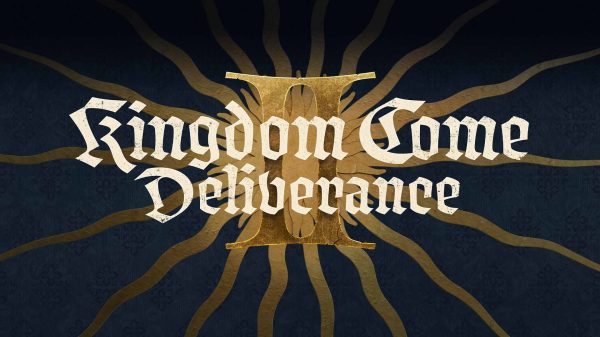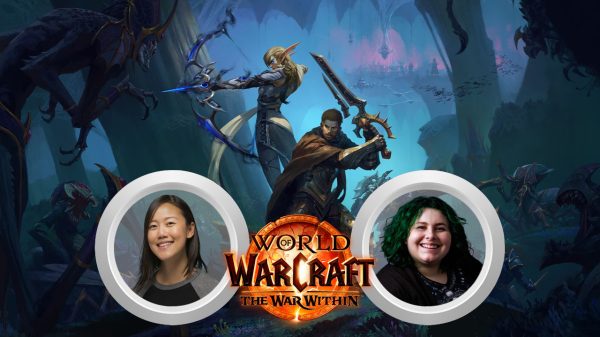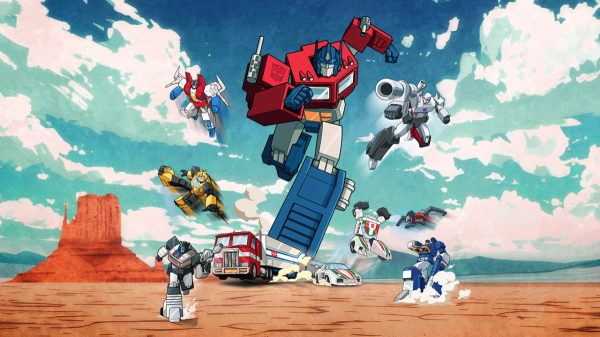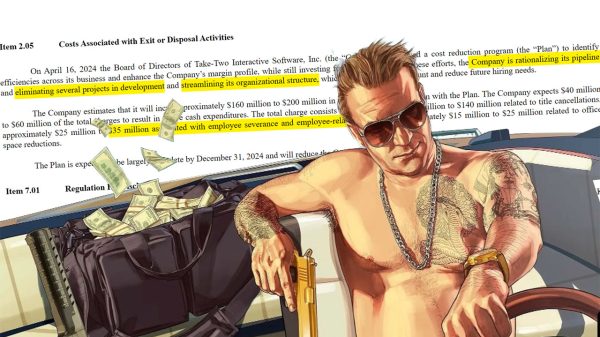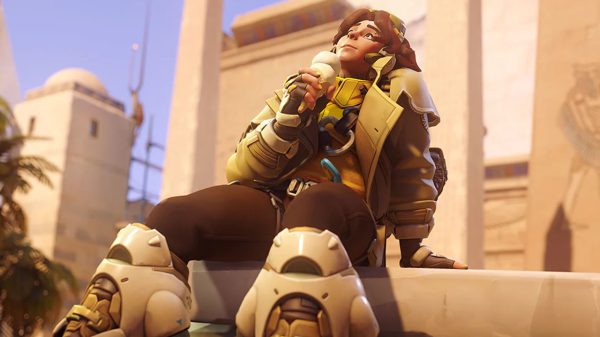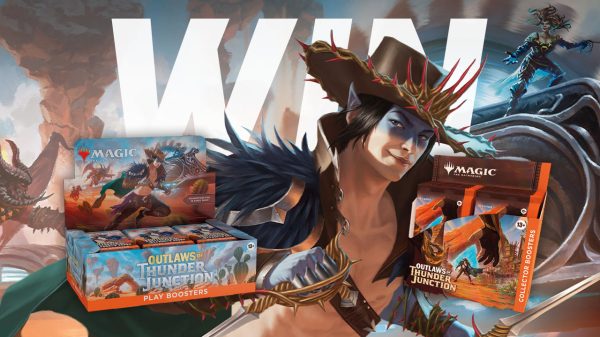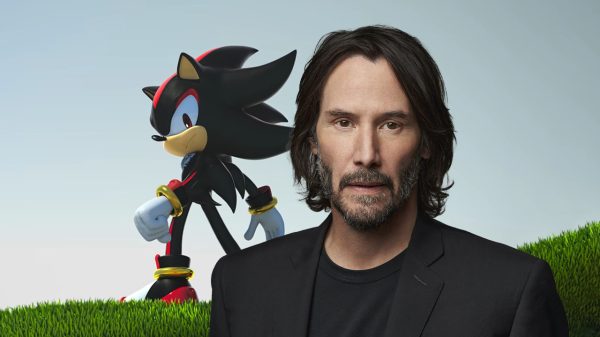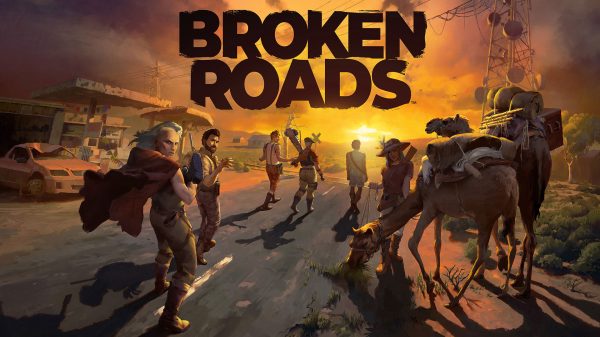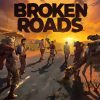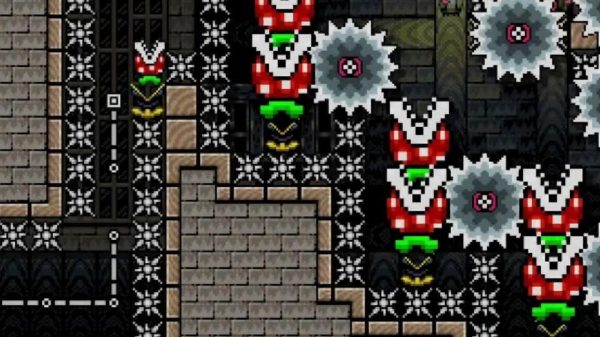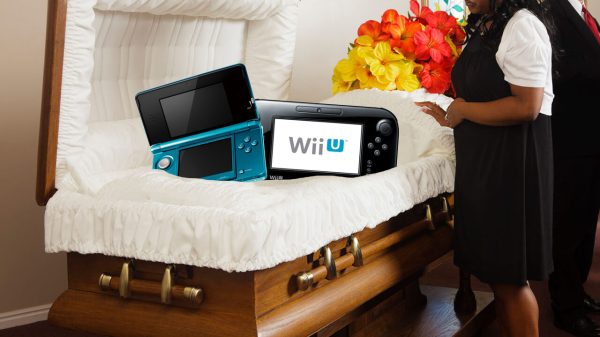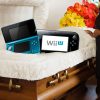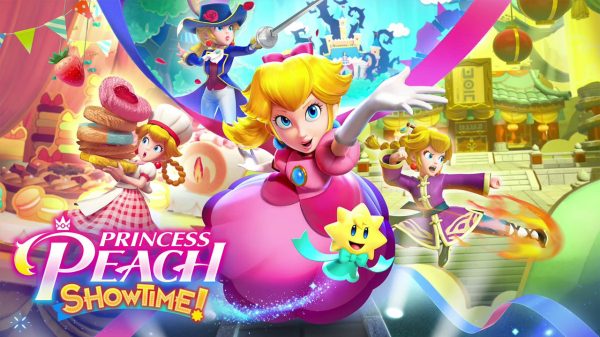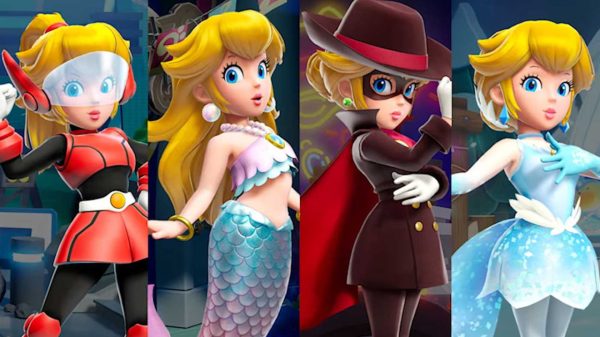Machida, Tokyo, 1978.
A young man stands at a Space Invaders arcade cabinet; he’s skipped class today to play it. His parents think that he’s a delinquent for doing it, but he’s not a bad boy. In fact, he’s a shy one and almost always tired. ‘He was discarding his future’, his parents would bemoan. Those video games will amount to nothing.
Twenty years later, he would be a household name in Japan – Satoshi Tajiri, creator of Pocket Monsters.
Satoshi had loved collecting insects as a child. He loved it so much that the other kids would call him ‘Dr. Bugs’. In those early years, he’d dreamed of being an entomologist. But Satoshi was living in a very bad time to love the Japanese countryside. Japan’s post-war ‘Economic Miracle’ skyrocketed Japan’s suburban development, and Machida was not immune to ‘progress’. Forests came down, and the insect population with them. Satoshi was left without his precious bugs.
Now, in 1978, he was in his final years of high school. Satoshi eventually graduated, but not before taking make-up classes. He started writing, editing and publishing a video game magazine, Game Freak, in 1981, rejecting offers from his father to work in more ‘normal’ jobs. The magazine was all about ‘helping gamers’, providing tips and tricks to beat different games.
The most copies he ever sold of a single issue was ten thousand.
As the magazine’s staff grew larger, they realised that they weren’t all too happy with most of the games they played. Why couldn’t they make their own? So, they did. Game Freak changed roles from game magazine to game studio in 1989. Their first game, Quinty (known in America as Mendel Palace), was published by Namco not long afterwards.
Quinty proved to be successful enough for Game Freak to continue producing games. Tajiri, though, had a dream project. He remembered his happy days catching bugs in the Machida forest, and lamented that children of his day were spending their free time inside:

Satoshi Tajiri in 2016
(image from Bulbapedia)
Kids play inside their homes now, and a lot had forgotten about catching insects. So had I. When I was making games, something clicked and I decided to make a game with that concept […] Playing video games, watching TV, Ultraman with his capsule monsters–they all became ingredients for the game. (TIME magazine, 1999)
Rocky roads
Satoshi had become fascinated with the Game Boy’s Link Cable accessory, which allowed consoles to connect to each other for multiplayer gaming. He thought that the cable could do more than simply provide a battleground; it could be used to trade bugs across each players’ collections, envisioning bugs crawling through the cable from one console to the next. Connection couldn’t just be competitive, it could be accumulating or even social.
Nintendo were skeptical when the idea was first pitched in late 1990. They were unsure about what the game actually was but were satisfied with Satoshi’s game design record. Nintendo backed Capsule Monsters, and even assigned a couple of other projects to Game Freak. They would release Yoshi for the NES and Game Boy in 1991, and Mario and Wario for the SNES in 1993. Along the way, ‘Capsule Monsters’ was renamed to ‘Pocket Monsters’ due to confusion regarding trademarks.
Development of Pocket Monsters was rocky from the start. Despite early successes making other games for Nintendo and other publishers, Game Freak was in danger of bankruptcy. Satoshi never paid himself for his work on Pocket Monsters, choosing to live off of his family’s income, but employees began to leave when Satoshi told them they couldn’t get paid.
Salvation came in the form of an investor: Creatures, Inc. They gave Satoshi and Game Freak the money they needed to finish development, in return for a third of the franchise’s rights.
After six years in development, Pocket Monsters Red and Green were released for the Game Boy on February 27, 1996.
The gaming press gave Pocket Monsters little coverage in its early days. The Game Boy was showing its age, and Nintendo had already begun development of its colour-boasting successor. In the months that followed, though, Nintendo noticed something peculiar.
Unlike bigger releases that saw a spike in initial sales before waning downwards, Pocket Monsters’ sales were getting higher. And they weren’t stopping. Upon investigation, Nintendo quickly realised that the aging Game Boy had made Pocket Monsters more accessible and not less. Its userbase was already massive by 1996, which meant that almost any Japanese child could play it with their friends. If you didn’t have one, a Game Boy was quite cheap by then.
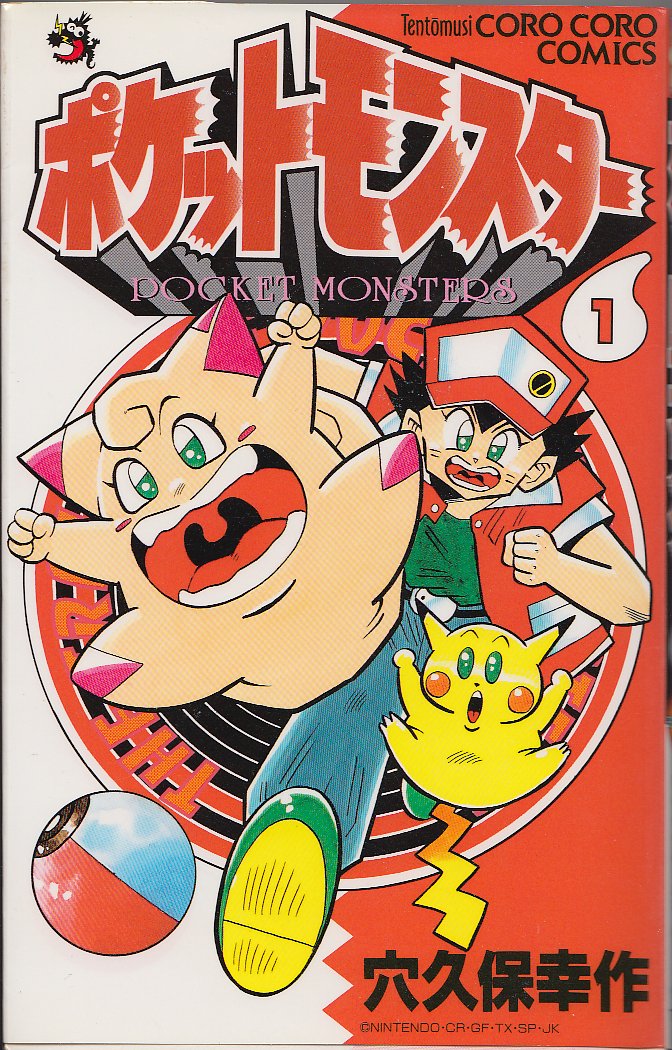
Cover of Pocket Monsters manga, vol. 1
(scan by John Adcock)
Its growing success was a pleasant surprise for Nintendo, who wasted no time in expanding the games into other forms of media. A manga had already been approved for distribution from Coro Coro Comics, through pre-existing deals with Nintendo. Indeed, it was Coro Coro that had helped Pocket Monsters reach a great deal of children in the first place – later promotions for Pocket Monsters would prove extremely successful.
Children’s TV producer Shogakukan also approached Tajiri for the production of an anime based upon the games. Tajiri, and the other owners of Pocket Monsters, reluctantly accepted, but only after making Shogakukan accept a couple of conditions. Firstly, Tajiri would oversee the anime’s production. Secondly, the anime’s production team would play a lot of Pocket Monsters before and during the making of the show. Upon its Japanese premiere in 1997, it quickly became the most-watched children’s programming in Japan.
By 1998, Pocket Monsters had sold nearly nine million games. The trading card game had sold nearly 400 million cards, and sequel games were on the way. Pokémania had truly begun, and it had yet to even cross the Pacific.
“I will travel across the land…”
Kyoto, Japan, 1997.
Al Kahn was here to do business. His company, 4kids Entertainment, was set to renew license agreements with Nintendo, so they can keep selling their merchandise in the United States. All that was needed was the signatures. It was approaching Christmas, the cold snow piling gently on the footpaths of Kyoto.
Kahn noticed a group of children gathered around each other’s Game Boy consoles, being unusually involved with each other. Then, he saw another. And another. Sure, kids loved to show off their new toys…but not until after Christmas.
Kahn’s curiosity got the better of him, and he began asking around. Every group gave him the same answer:
“Pocket Monsters.”
Where children saw a common interest, Kahn saw opportunity. Upon meeting Nintendo to seal the deals, he bought up Pocket Monsters. Specifically, he asked about bringing it overseas. Executives gave him a puzzling answer: There were no plans to market Pocket Monsters outside of Japan.
Neither of the two games were fit for anywhere outside Japan, they said. The game needed a degree of patience, and therefore weren’t as ‘action-packed’ as American children liked.
But Kahn wasn’t giving up. He knew that Pocket Monsters would be a hit Stateside. In a move that would change video game history forever, he went all-in: Al Kahn offered to front the money to get Pocket Monsters across the Pacific. His only request was that 4kids retained the licensing rights outside of Asia.
Nintendo accepted, and signed away the licensing rights to the games and the accompanying anime. The games would still be released under Nintendo of America, but 4kids would be allowed to use them to promote the brand. Nintendo of America, of course, would oversee the project and provide additional advertising.
Something didn’t seem right to Kahn, though. The name was too long. It needed to be catchier. Cooler. As Kahn would say himself, it needed to be more “Japanese-y”. By February of 1998, its new American name is a shortened one:
‘Pokémon.’

Al Kahn at the premiere of the second Pokemon movie in 1999
(image from Yahoo Finance)
(Game) Freaking out
Following that fateful meeting, the word from the higher-ups reached Game Freak. Nintendo President Hiroshi Yamauchi himself gave them the order: “Release this in America!” By 1998, another game Blue version had joined the ranks. Development of sequel games, Gold and Silver, was already under way.
But Game Freak were still a small developer. Gold and Silver had already been delayed from their original March 1998 release, because they’d become “worn out”. On top of that, their thoughts on localization mirrored those of the executives that Kahn had met earlier: Pocket Monsters would never catch on outside of Japan. They simply didn’t have the resources to localize the games and work on their highly-anticipated sequels. An English-language version of Pocket Monsters was “a dream within a dream.”
In this dark time, one man turned the tide. He volunteered to localize the games’ structures, all by himself. As the CEO of the Pokémon Centre Company (later The Pokémon Company), Tsunekazu Ishihara, would say in 2016:
What’s great about him was that he said “Dear Game Freak, please focus on making Gold and Silver. I will localize Red and Green’s whole structure without hearing anything from you”.
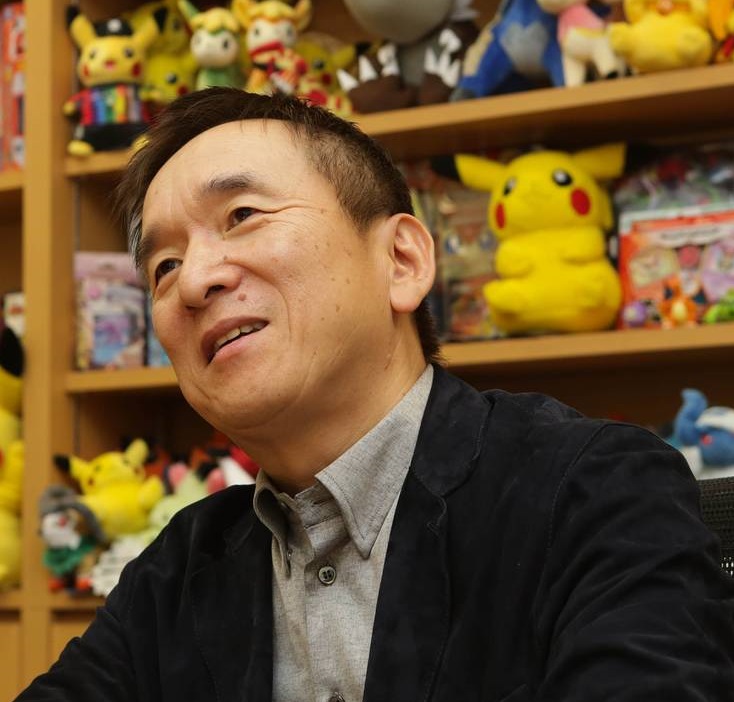
Tsunekazu Ishihara in 2016
(image from The Wall Street Journal)
That man was noted badass Satoru Iwata, future President of Nintendo.
Iwata had worked for Creatures, Inc., the company that had bailed Game Freak out of financial ruin years before. He was now President of HAL Laboratories, which makes his selfless involvement all the more extraordinary. After all, that kind of work isn’t normally something a company president does. His initial work was forwarded to Assistant Department Manager for Nintendo Teruki Murakawa, who then met with Iwata to discuss the work that had been done already. Their meeting allegedly went from noon to midnight.
Iwata had set the stage for the complete localisation of Pocket Monsters. By August of 1998, Pokémon was ready to leave its home country and explore its new horizons.
Establishing a beachhead
Al Kahn’s work, meanwhile, was only just beginning.
Kahn had a plan of attack for Pokémon’s invasion of America, which found support with Nintendo of America. The first wave of attack would come not from a Game Boy, but from the warm glow of a television screen. The anime would serve as an advertisement of the games, which would be released later. There was one obstacle that had to be overcome, though.
In the late 90s, anime had yet to be a proven money-maker for anybody that wasn’t a teenager. Bandai’s Sailor Moon, for example, had proven to be a moderate success for older American audiences, but nothing more. It had been cancelled by the time Pokémon was first shown in America in 1998. It would return to American broadcast only due to a strategically-timed petition from fans. Getting a Japanese cartoon and video game popular among American children wouldn’t be an easy task.
It was imperative, therefore, to make the anime less Japanese. A heavy-handed localisation effort was the simplest solution and is a move that remains controversial today. References to Japanese culture and customs were either entirely removed or adapted for American children (with varying degrees of success).
When broadcast networks refused to put out such a ‘weird’ show despite promises of a strong localisation effort, Kahn turned to syndication. Nintendo of America helped sway individual stations to screening the anime, by promising up to five million dollars in advertising to them. Despite these successes, stations often gave Pokémon an ‘Old Yeller’ of a timeslot: Between 6 and 6:30 in the morning. Nevertheless, the syndication effort managed to reach more than 90% of US stations by the time the anime debuted on the 7th of September.
The sceptics would only grow stronger. On the 16th of December 1997, the 38th episode of the Pocket Monsters anime caused at least 618 seizures in viewing children. Later reports would affirm that the effect was exacerbated by Japanese television viewing habits, ballooning into a brief period of mass hysteria, but only hindsight is 20/20.
The incident dominated the Japanese news for weeks. Some TV news reports replayed the triggering footage in their coverage, which created more cases. Nintendo’s stock price plummeted. The anime wouldn’t air again until April of 1998, after an intensive investigation and the introduction of new animation guidelines.
The incident reached American news nearly immediately and didn’t leave for at least a week– bad news for both 4kids and Nintendo of America. Even after the crisis had left the public consciousness, news coverage of the anime was negative.
Despite this, localisation continued unabated. Then-Nintendo of America development VP (and founder of Nintendo Power magazine) Gale Tilden told Time Magazine in its now-iconic 1999 report on Pokémon:
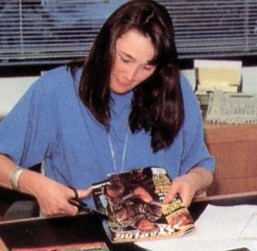
Gale Tilden in the late 80s
(image from Gamasutra)
“…we knew it was isolated to that one episode. […] It did not deter us from being excited. We were committed to taking a run at it.”
The anime’s reputation wouldn’t be salvaged until after it’d started its broadcast run in America.
Meanwhile, both 4kids and Nintendo of America were pushing advertising efforts. The former ran promotional material in its (and other distributors’) VHS tapes, and also commissioned print advertisements.
The latter dived deeper. Nintendo Power had covered Pocket Monsters since January of 1998, but its formal ‘announcement’ of Pokémon came in its May 1998 issue. “The Pokémon are coming!”, it proclaimed. Promo VHS tapes were given out as part of a Nintendo Power subscription or at Toys R Us:
Nintendo of America also signed a $17 million partnership with KFC, consisting of Kids’ Meal toys and demo booths at selected restaurants. The KFC promotion began in November of that year, two months after both the games and anime had been released.
Coming to America
Topeka, Kansas. August 27th, 1998.
It’s early afternoon. Children are lined up at a local baseball field, their parents waiting behind them. The crowd numbers between 2500 and 3000 people. It’s here, in the middle of America, that Nintendo is hosting a ‘Pokémon Party’ to officially launch the franchise.
Planes fly overhead, the crowd looking up at them. Objects tumbled gently down to the ground. Their sizes range greatly. Small and soft plushies of a yellow mouse with a zig-zag tail are joined by Volkswagen Beetles, modified to visually match the new critter. Its name, apparently, is Pikachu.
The mayor of Topeka has renamed the city to ‘Topikachu’ for a day. Each child receives a certificate granting them the title of Pokémon trainer. From the Volkswagens, they play Pokémon Red and Blue and watch the anime. They’re instantly hooked, but nether they nor their parents can even begin to understand the power that’s inside this new craze.
Nearly three weeks after the anime, Pokémon Red and Blue versions were released in America on September 28th, 1998 – 20 years ago today. (Today’s actually the 29th where I’m writing from. Australia lives in the future, you see.)
Over the next two years, Pokémon would prove to be a global phenomenon. 200-300 thousand sales of a Game Boy game were considered a normal amount in the late 90s; Pokémon Red and Blue had 400 thousand retail orders in its first two weeks. Stores across America were selling out of shipments the day that they arrived.
The turn of the millennium, however, was undoubtedly the peak of Pokémania.
Blasting off
1999 saw the release of Pokémon in European, Latin American, and (some) Asian markets, propelling its success yet further. And further, further it flew.
By March in America, Pokémon Red and Blue had become Nintendo’s best-selling individually-sold game ever – 1.7 million units, with a further 800 thousand between then and June. Hasbro had won a contract to make and distribute Pokémon toys worldwide (except Asia) in 1998, but they simply couldn’t keep up with demand.
The anime was a huge success, despite its awful timeslots. It reached the top of children’s broadcasting rankings almost immediately, and VHS sales regularly topped charts as well.
Pokémon: Yellow Version also released outside Japan in 1999 (Australia was its first destination this time). It became the fastest-selling handheld game of all time, selling out across the globe. Retailers in the US had to issue warnings about their lack of stock. Yellow version was released to coincide with the release of the Game Boy Colour, which rose the sales of both.
The first Pokémon film, Mewtwo Strikes Back, was released close to Yellow version and remains one of the highest-grossing video game films of all time. A Warner Bros. US promotion, offering free tickets, was swamped with 70 thousand phone calls per minute. It premiered across over 3000 theatres in the United States, and promotional trading cards handed out with tickets sold out across entire states in its first weekend.
Speaking of cards, the Pokémon TCG arrived in America (through Wizards of the Coast) in late December of 1998 and sold 50 million cards by March of 1999. This success, despite missing out on the Holiday season, was phenomenal. Wizards of the Coast weren’t printing enough cards to meet demand. Even on their 10th nationwide printing, which was “basically exhausting the available card printing factories in the United States”, cards were still selling out.
1999 would also see the release of Pokémon Snap in Japan and North America (Australia and Europe would get it in 2000), and Pokémon Stadium in Japan. Other markets would get Stadium the following year. Both games were huge successes for the straggling Nintendo 64, as the PlayStation continued its cultural domination.

(image from Original Film Art)
In Sydney, the first competitive international Pokémon tournament was held after (presumably) gruelling battling for local representation:
Pokémon Pinball was simply the icing on the cake. Its release in Japan and America in 1999 (and the rest of the world in 2000), was crowned as the fastest-selling Game Boy game of all time. Pokémon was unquestionably on top of the world. How long that would last, though, was anybody’s guess. For some, it had already overstayed its welcome…
The good is bad for the ugly
Colorado Springs. August 11th, 1999.
The night sky looms overhead. 85 children are gathered here, sitting in small chairs. They’ve been bought here for a special demonstration. Their Pastors, Mark Juvera and Mark Cowart, are explaining to them that this new-fangled Pokémon is a work of the Devil. Why, one of the cards even said “abracadabra”!
To make his point, Juvera lays out a pile of Pokémon cards and takes a “holy blowtorch” to them. Then, a Pokémon figure receives the sharp swing of his sword. Meanwhile, his young son rips and tears the limbs off of his own Pokémon plushie. The watching children, in an excited frenzy, begin chanting:
“Tear it up! Tear it up!”
This is an event that really happened, no kidding. Of course, not all religious people were inherently against the Pokémon phenomenon. Like most parents, their responses ranged from apathetic to positive. Pokémon was teaching children to read, bringing them together in a more social way, and was generally harmless (until it came to their parents’ wallets).
That said, Pokémon had its fair share of sensationalist controversy back in the day. Most of it was dismissible, but some was based upon genuine concern. In Turkey, Pokémon was promptly banned after two children were apparently inspired by it to attempt unaided flight. The games were (nearly) outlawed in Russia in 2002.
Concerns about manipulative marketing on the part of Nintendo and its distribution allies rang loudly, particularly in the Anglosphere. Children faced charges of armed robbery, stabbings, and accusations of being victims of gambling addictions. TIME Magazine, in the aforementioned 1999 article, denounced Pokémon as a “pestilential Ponzi scheme”.
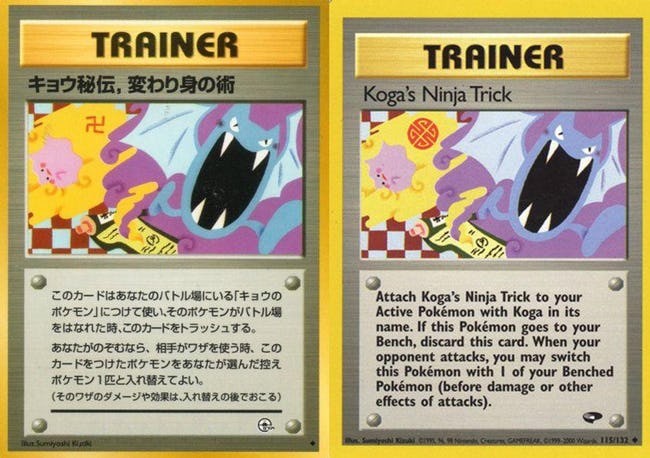
A Japanese card bearing an unfortunate symbol was discovered by an 11-year-old Jewish boy in 1999
(image from Ranker)
Thankfully, a lot of it is okay to laugh at in retrospect. Pokémon was declared illegal in Saudi Arabia after it was declared to be part of an international Zionist conspiracy. South Park’s November 3rd, 1999 episode, Chonpokomon, lampooned conspiracy theories that the franchise was intended as a brainwashing mechanism.
I mean, just listen to Televangelist Phil Arms rant about Pokémon in his 2000 VHS Pokemon: Is It Just A Game?, and tell me that you didn’t snort even a little bit:
The majority of adults, though, simply waved it off as another fad that would eventually pass. And they were right.
The end of the beginning
When did Pokémania end?
It’s certainly a tough question, and one that’s been rattling my brain since I started writing this elongated monstrosity.
Gale Tilden admitted in a January 2000 interview for Variety magazine that “[Nintendo] don’t think that it’s going to be this hot forever”. To compliment, the article’s author notes that the craze was “already losing steam in Japan”. Pokémon’s days were numbered.
Despite this, the release of Pokémon Gold and Silver in late 1999 were extensively covered and sold extremely well, even seeing immense pre-order numbers.
The year 2000 also saw the release of the second Pokémon movie, The Power of One, and Pokémon Stadium (which was, as mentioned before, a critical and commercial success). The former earned less than its predecessor, but still a respectable amount. The latter shoveled badly-needed coal into the then-aging Nintendo 64.
After 2000, though, the river ran dry.
Pokémon Crystal Version launched incrementally around the world between mid and late 2001 and sold extremely poorly compared to its predecessors. Pokémon wouldn’t receive new titles until the 21st of November 2002, when Ruby and Sapphire Versions launched in Japan. These games wouldn’t see release outside Japan for another four months.
The anime’s numbers dropped, as its stories entered a new frontier to match the newer games. Besides, 4kids were already onto something new – which would also eat into the Pokémon TCG’s sales. The third movie, Entei: Spell of the Unown, made less than half of its predecessor’s box office take when it left Japan in April of 2001.
Pokémon Live! was a stage show that toured the United States from September of 2000 to January of 2001; it also played in Dubai and Portugal. It was popular, but it sucks. Great time with friends and booze, though.
The evidence is clear, then. But can we assign a specific date to this theory? We sure can.
Ironically, it would be Al Kahn’s 4kids that pulled the trigger on Pokémania, in the morning of September 29th, 2001; The first English broadcast of Yu-Gi-Oh! made it clear what the kids wanted now. At long last, they’d caught ‘em all.
“To the end, I will be with you…”
But Pokémon hasn’t left us, has it?
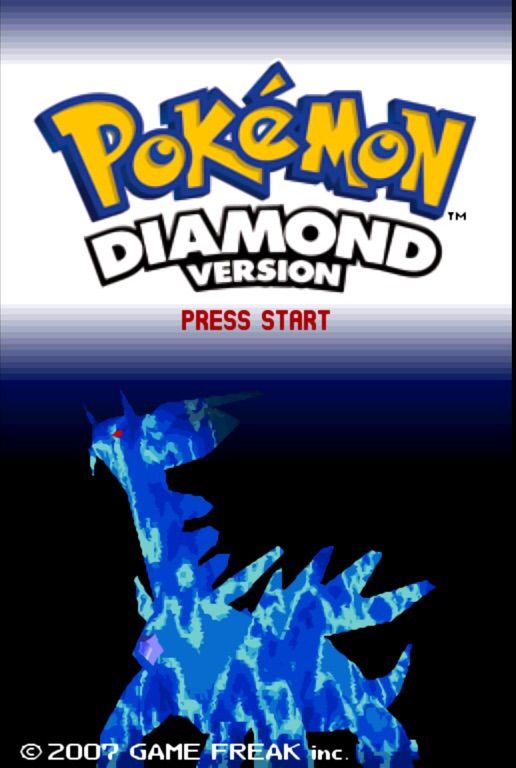
This was my re-introduction to Pokémon
(image from Amino user PKMN Breeder Azalea)
New titles in the series may not reach the star-studded heights of its first generation, but they remain system sellers. Trend-watchers, according to Family PC’s Deborah Porterfield in 2000:
“[thought] that the Pokémon craze may finally be slowing down, especially among middle-school children who are mortified now that their younger siblings want to play.”
Pay particular attention to the last half of that sentence; the kids who’d been clamouring for Pokémon had simply grown two years older. They were looking for something edgier, cooler, more dangerous. Yu-Gi-Oh! fit that bill perfectly.
But their younger siblings and friends were still playing Pokémon. Ruby and Sapphire became hot-sellers for the new Game Boy Advance, adding more comfy pillows to Nintendo’s throne as the dominant handheld console manufacturer. Pokémon Diamond and Pearl Versions gave the DS a similar sales injection in 2006-2007.
Why and how Pokémon live on past its original eruption? I’ve written about its eternal charm before (albeit poorly), but there’s more to it.
Anne Allison, now Professor of Cultural Anthropology at Duke University, wrote in 2003 that Pokémon taps into a “pulse in the imaginations and lives of millennial children in this era of cyber-technology and post-industrial socialization” that Japanese cultural exports exploit by “blending flexibility and fantasy into technology”.
In 2003’s Digital Play: The Interaction of Technology, Culture and Marketing, the authors make the argument that late-90s Pokémania represented a dramatic shift in global popular culture. You need only look at its legacy to see just how correct they are.
Thanks to Pokémon, anime became mainstream outside of Japan. Media like Akira had penetrated the Pacific barrier before, and Mighty Morphin’ Power Rangers had proven to be an unlikely hit that exposed millions of children to Japanese entertainment, but anime remained a niche genre relegated to a home video audience. You need only look at the previously-mentioned lukewarm reception to Sailor Moon, and the likewise mediocre reception of Dragon Ball Z until its English dub was broadcast in a post-Pokémon 1999.
Nowadays, anime is inescapable – even if you’re not into pop culture.
And finally, Pokémon GO speaks for itself. The fact that it was able to pull in the astronomical number of players that it did in 2016 speaks volumes for the enduring power. No, it’s not quite dead.
Two decades after the franchise skyrocketed into stardom, Pokémon is now the most profitable media franchise in the world, being worth an estimated 80 billion USD. It’s the third-highest selling video game franchise of all time, with over 300 million games sold. There’s not a single person in the world who doesn’t have at least a vague idea about what a Pokémon is.
The movies have been quoted by US presidential candidates. Pokémon has now sold successfully in every market in the world, even reaching children in isolated Indonesian islands. It’s a multimedia phenomenon that hasn’t been seen before or since.
For some, the fever never faded. Pokémon remains popular with children (albeit on a much smaller scale than the late 90s), but its adult audience has persisted across the generational gap. Pokémon GO’s playerbase in 2016 was mostly between the ages of 18 and 34. It remains predominantly 18+ today. Pokémon forums (some with ages well into the double digits) are still frequented by passionate adult players, despite the very notion of a dedicated web forum being an archaic one.
In 2016, 2.1 billion cards Pokémon cards were sold. Major tournaments for the TCG host both children’s and adult’s divisions of play, but it’s the adults who become e-famous. That’s not the interesting part, however. In a 2013 interview, competitive player Charles “Chalkey” Hornstein noted that:
“If you actually talk to the people in the adult division, you’d be amazed at how different everyone is outside of the game. I’ve met lawyers, consultants, hospital workers, bioinformatics specialists, personal trainers…”
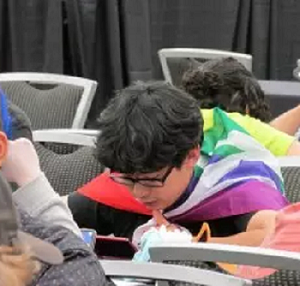
“Chalkey” in 2013
(image from linked interview)
It’s a far cry from what you’d expect from such an environment, isn’t it?
People with bustling adult lives, who you’d never think would even dream of doing something so ‘childish’, are amongst the nation’s best Pokémon trainers. Two out of three of 2018’s Pokémon video game champions are older than you’d think.
Who knows how many of them share Chalkey’s long-term commitment to what had originally begun as one man’s endless commitment to a dream?
“We all live in the Pokémon world”
In the end, that’s the real takeaway of Pokémania and its legacies. It’s more than a fad’s troubled history of close shaves: it’s something that’s touched the lives of millions of now-adults. It’s something that sticks with you, even if you no longer directly engage with the world of pocket monsters.
When you’re a kid, life’s a drag. You’re constricted. Adults talk down to you for 18 years of your life, because you’re not part of the real world yet. You’re only there to replace them when they die, and it sounds like they resent that. You’re told what to do, what to think, and the worst part of it is that you do eventually become what they want you to: themselves.
Other fads before and since simply modified the world around kids to make it more appealing; it didn’t scratch that itch of what kids truly wanted. To a kid growing up in the late 90s, Pokémon was a whole new world. A breath of fresh air from the bondage of adult supervision. The Pokémon world wasn’t one for adults – it was yours. Yours to explore with other kids, yours to defeat your shortcomings with, both in the game world and outside it.
After all, it was this interweaving of the Pokémon world and the real one that had allowed Al Kahn to discover Pocket Monsters. A less social experience would have created groups of children he simply may not have been interested in. It wouldn’t have fostered a localisation push that was determined that it would be a success, despite the world being against them. Most importantly, it wouldn’t have made Pokémon the cultural juggernaut it is today.
Even as these children of Pokémania grew older, their memories of it remain. Some choose to leave them as relics of a simpler time. Others kept it around despite its waning popularity. Eventually, social stigmas surrounding ‘nerd culture’ would ease, but these big kids weren’t waiting around.
Chalkey put it better than I ever could:
“When it comes down to it, we’re the new generation. We’re adults now, and we get to decide what that means. I spent the better part of my life wishing I had the nerve to indulge my nerdier hobbies, and when I finally took the leap I never looked back. People look down on Pokémon players […] but if they could know how much of the world I’ve seen, how many amazing people I’ve met, and just how happy it can make a part of the world, then who knows? And even if that never happens, we may as well just do what makes us happy. As long as it’s not hurting anyone, who cares what others think?”
And to think that is all almost never happened.
Non-linked sources/further reading
Primary sources
- Nintendo Power magazine, January 1998 [no. 104], May 1998 [no. 108], August 1998 [no. 111])
- What’s Pokemon? [sic] Just Ask Any Kid, Denise Gellene, Los Angeles Times, December 10th, 1998: http://articles.latimes.com/1998/dec/10/business/fi-52393/2
- Pokémania, Deborah Porterfield, FamilyPC magazine, December 2000.
- How Pokeman [sic] Grabbed U.S. Kids: A medium-by-medium look at the property’s domination of 1999, Wendy Jackson Hall, Variety magazine, January 17-23rd 2000 (vol. 377).
- The Ultimate Game Freak, Shuzo Ogushi, TIME Magazine, November 22nd, 1999 (vol.154, no. 2).
Secondary sources
- Digital Play: The Interaction of Technology, Culture, and Marketing, Stephen Kline, Nick Dyer-Witheford & Greig de Peuter, McGill-Queen’s Press, 2003.
- Pikachu’s Global Adventure: The Rise and Fall of Pokémon, Joseph Tobin [editor], Duke University Press, 2004.
- Pokemon [sic] Case Study, Peter Oehlkers, University of Salem, 1999: http://w3.salemstate.edu/~poehlkers/Emerson/Pokemon.html
- ‘Portable Monsters and commodity cuteness: Pokémon as Japan’s new global power’, Anne Allison, Postcolonial Studies, vol. 6, no. 3, 2003.
- Pokémania Caught ‘Em All: The Youth Imagination, Adult Uncertainty, and Everybody’s Wallets, Sara Caudill, Post Bubble Culture, 2010: http://postbubbleculture.blogs.wm.edu/2010/04/03/pokemon-caught-%E2%80%98em-all-capturing-the-youth-imagination-adult-uncertainty-and-everybody%E2%80%99s-wallets/
- Meet the man who made Pokémon an international phenomenon, Hayley Tsukayama, The Washington Post, 2016 (accessed from a rewrite by The Sydney Morning Herald): https://www.smh.com.au/business/meet-al-kahn-the-man-who-made-pokemon-an-international-phenomenon-20160805-gqlkvq.html
- Pokémon Shock: How a single episode almost derailed a franchise, Katie Rife, AV Club, 2017: https://tv.avclub.com/pokemon-shock-how-a-single-episode-almost-derailed-a-f-1798260019
- The ‘Pokémon’ Invasion, 20 Years Later, Claire McNear, The Ringer, 2018: https://www.theringer.com/2018/8/27/17779896/pokemon-junichi-masuda-20-year-anniversary
Arana blames her stunted social skills and her general uselessness on a lifetime of video games. Between her ears is a comprehensive Team Fortress 2 encyclopedia. Her brain remains at large.





